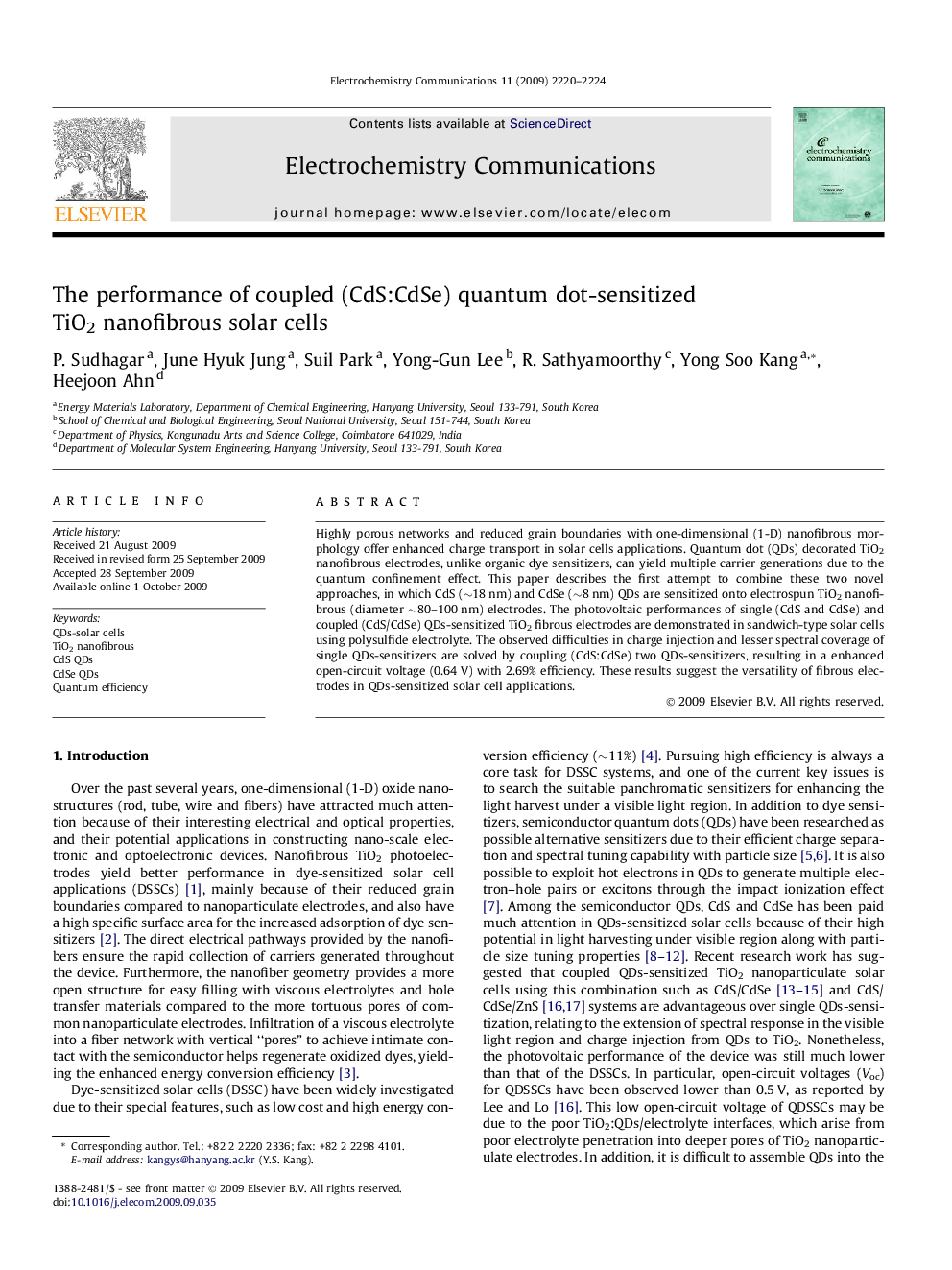| Article ID | Journal | Published Year | Pages | File Type |
|---|---|---|---|---|
| 180549 | Electrochemistry Communications | 2009 | 5 Pages |
Highly porous networks and reduced grain boundaries with one-dimensional (1-D) nanofibrous morphology offer enhanced charge transport in solar cells applications. Quantum dot (QDs) decorated TiO2 nanofibrous electrodes, unlike organic dye sensitizers, can yield multiple carrier generations due to the quantum confinement effect. This paper describes the first attempt to combine these two novel approaches, in which CdS (∼18 nm) and CdSe (∼8 nm) QDs are sensitized onto electrospun TiO2 nanofibrous (diameter ∼80–100 nm) electrodes. The photovoltaic performances of single (CdS and CdSe) and coupled (CdS/CdSe) QDs-sensitized TiO2 fibrous electrodes are demonstrated in sandwich-type solar cells using polysulfide electrolyte. The observed difficulties in charge injection and lesser spectral coverage of single QDs-sensitizers are solved by coupling (CdS:CdSe) two QDs-sensitizers, resulting in a enhanced open-circuit voltage (0.64 V) with 2.69% efficiency. These results suggest the versatility of fibrous electrodes in QDs-sensitized solar cell applications.
